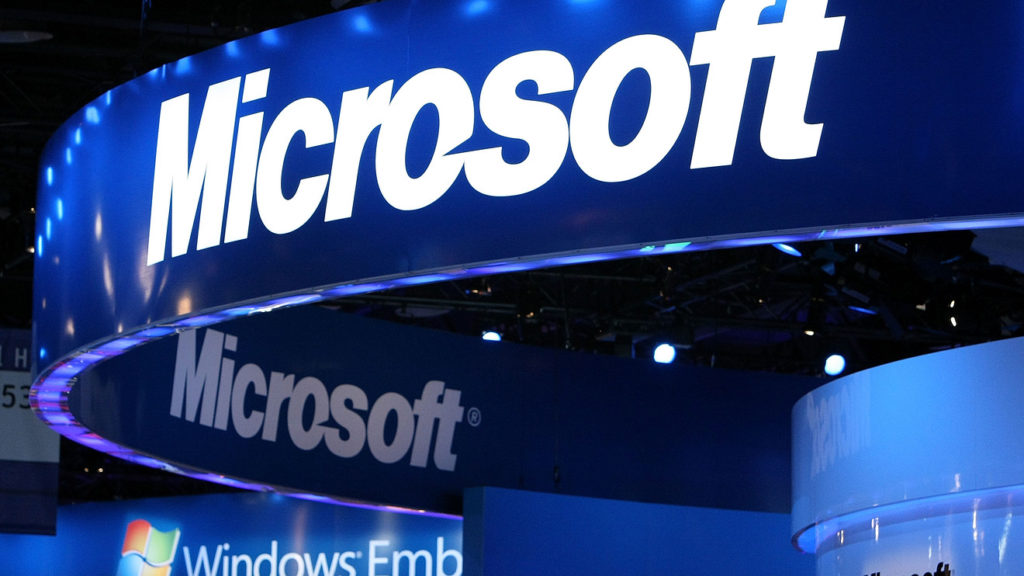No doubt, the quarterly numbers Microsoft posted yesterday were impressive and even startling. But the real kick in the pants were the subtle indications from CEO Satya Nadella that its enterprise-cloud business—now on a $40-billion annualized run rate—is only just starting to rock.
Microsoft’s been #1 on my Cloud Wars Top 10 rankings for well over a year. This week it reported that its commercial-cloud revenue jumped 41% to $9.6 billion for the 3 months ended March 31. So any competitor that wants to take a run at that #1 spot had better pack a darn big lunch. Because that’s gonna be one long and tough scrap.
As always, Nadella displayed remarkable vision and clarity in his comments on the earnings call with financial analysts. But this time he added some additional flourishes that I feel offered unique insights into not just where he intends to take Microsoft, but also how he intends to get there.
In that context, here are 10 excerpts from the earnings-call transcript. I believe these themes reveal Microsoft’s strongly held conviction that the remarkable results we’ve seen from the company over the last years are merely the beginning of the beginning. And I’m reverting to an approach I’ve used multiple times—selecting and adding context to CEOs’ own words—because this approach offers the clearest and most-direct insight into company strategy, thinking and vision.
1. Relentless focus on customer success.
After opening his prepared remarks with the traditional ‘hello and thanks for joining,’ Nadella laid out the three primary factors behind Microsoft’s superb quarter. And he saved the best for last: “We had another strong quarter with double-digit top-line and bottom-line growth, the result of picking the right secular trends, accelerating our innovation, and most importantly, relentlessly focusing on our customers’ success.” Nadella didn’t read a laundry-list of customer names. He didn’t talk about the antiquated notion of “customer satisfaction.” Rather, he hit again on a topic he comes back to at every possible opportunity: the business success achieved by customers undergoing digital transformations. Driven by Nadella’s customer-centric approach, Microsoft is at the forefront of a trend sweeping the marketplace. (And you can read all about that in this week’s Cloud Wars Newsletter.)
2. Redefining the core elements of the cloud.
In his second sentence, Nadella laid out a new definition for the cloud that goes beyond the tired trio of IaaS, PaaS and SaaS. His definition is also more germane to today’s digital economy: “Our trusted and extensible cloud platform spanning applications, infrastructure, data and AI, productivity and collaboration and also business applications enables every organization to create their own intelligent systems and experiences to compete and grow.” Leaders lead, and along the way they reframe the language, the vision, and the dynamics of the marketplace.
3. Microsoft was hybrid before hybrid was cool.
In laying out the current state of the Azure business, Nadella offered this perspective:
“From the outset, we took a differentiated approach to the cloud to meet the real-world needs of customers. Our architectural advantage is a clear reason for our success. Azure is the ONLY ‘true hybrid’ hyperscale cloud that extends to the edge. Operational sovereignty is increasingly critical to customers, and Azure uniquely provides consistency across development environments, operating models and technology stacks – whether connected or disconnected to the public cloud.”
Hybrid has become the unquestioned enterprise strategy for almost every business. And Microsoft’s history of having been there first, combined with its huge ongoing investments, give customers a great sense of comfort as they head to the cloud. Later in the call, Nadella said, “Our overall approach has been to have a view of an architecture that is grounded in our customers’ needs. So we always believe that in distributed computing, you need a cloud and an edge. You need hybrid—and guess what, today in 2019, hybrid has become much more mainstream.”
4. The rise of “Operational Sovereignty.”
Did you catch Nadella’s use of those words in the excerpt above? Now, that’s a pretty fancy term—but in fact, it perfectly reflects from the *customer perspective* the true value of hybrid: it’s the customer that’s calling the shots, not the technology provider. Similar to another customer-centric Nadella-ism from a few years ago—the “digital estate”—the term “operational sovereignty” is part of Nadella’s ongoing effort to reframe the whole enterprise-technology conversation in language centered on customers and their needs and priorities, rather than on tech vendors and what they’re trying to sell. I’ll bet you a nickel that we’ll all start seeing the term “operational sovereignty” pop up frequently in the next few months.
5. Fortune 500 workloads.
“More than 95% of the Fortune 500 run their workloads on our cloud,” Nadella said. That type of business was rarely possible for Microsoft in the past—but as you’ll see in a moment, it’s becoming the core of Azure’s future.
6. Massive commitment to global infrastructure.
While AWS, Google Cloud and IBM make similar claims about having more global regions than anyone else, here is Nadella’s version: “We’re building Azure as the world’s computer, with more global data-center regions—now including two in South Africa—and more compliance certifications than any other cloud provider. And last week, we announced two new Azure government regions to meet the stringent requirements for maintaining the security and integrity of classified US government workloads.”
7. Unleashing IoT.
Highlighting the need to comprehensively manage the 20 billion connected devices that will be in operation by next year, Nadella said the Azure IoT platform helps customers “build, manage and secure their connected devices.” He added that the recent acquisition of Express Logic brings “our cloud to more than 6 billion MCU-powered endpoints.” On the customer side, “BMW Group is partnering with us to speed the adoption of industrial IoT, both in automotive and more broadly in manufacturing, and Renault-Nissan-Mitsubishi Alliance and Volkswagen both chose Azure to fuel their new connected car experiences.”
8. Advanced analytics in the cloud.
“Data and analytics are the foundation for building an organization’s AI capability, and we are investing to make Azure the best cloud for data estates – from data warehousing to real-time stream analytics. Daimler chose Azure as its new platform for big data and advanced analytics, and third-party analysts affirm our price-performance lead in this fast-growing space.”
9. Helping customers become software companies.
This has been a top priority of Nadella’s over the past couple of years. He has repeatedly said that it’s no longer enough for Microsoft to sell customers packaged solutions—rather, Microsoft has to give those customers the tools and insights to allow them to become software factories themselves.
“What has begun to show up at scale is competitive differentiation for us—and that’s what you’re seeing in our numbers. But most important, you see it in the customer momentum, and in what I believe is customer success. Digital technology today is not about tech companies doing innovation. It is about the rest of the world doing innovation with technology—and I believe Microsoft is in a unique position to enable that.”
10. Azure is opening up new markets Microsoft was unable to touch in the past.
To me, this has been perhaps the most remarkable result of Nadella’s leadership and of Microsoft’s evolution to hyperscale status: the ability to demonstrate to the world’s largest companies that Azure can fully handle their biggest and most-challenging mission-critical workloads. (For more on that, please check out Microsoft Surge Continues with “Phenomenal Pipeline” of SAP Workloads Moving to Azure.) And here, Nadella describes how that’s opening up massive new market for the company:
“Having grown up essentially in our infrastructure business at Microsoft, I would say that… we are doing much better than we did in the previous era because we are seeing these tier 1 workloads which we never saw in the past. In the client-server era, we never participated in the core of the digital infrastructure in financial services or in healthcare or in retail or in manufacturing.”
And now, many companies across those industries have turned to Microsoft to become their primary technology partner on the journey to becoming end-to-end digital businesses.
So: nobody’s unbeatable, and no company ever *owns* first place in any marketplace—they’re just temporary lease-holders. But in the here and now, Microsoft and its exceptional CEO are building the profile for exactly what the world’s leading technology provider should be like in 2020 and beyond.
Disclosure: at the time of this writing, Microsoft was a client of Evans Strategic Communications LLC.
Subscribe to the Cloud Wars Newsletter for in-depth analysis of the major cloud vendors from the perspective of business customers. It’s free, it’s exclusive, and it’s great!
*******************
RECOMMENDED READING FROM CLOUD WARS:
The World’s Top 5 Cloud-Computing Suppliers
Amazon Versus Oracle: The Battle for Cloud Database Leadership
Why Microsoft Is #1 in the Cloud: 10 Key Insights
SAP’s Stunning Transformation: Qualtrics Already “Crown Jewel of Company”
Watch Out, Microsoft and Amazon: Google Cloud CEO Thomas Kurian Plans To Be #1
Oracle, SAP and Workday Driving Red-Hot Cloud ERP Growth Into 2019
The Coming Hybrid Wave: Where Do Microsoft, IBM and Amazon Stand? (Part 1 of 2)
*********************








